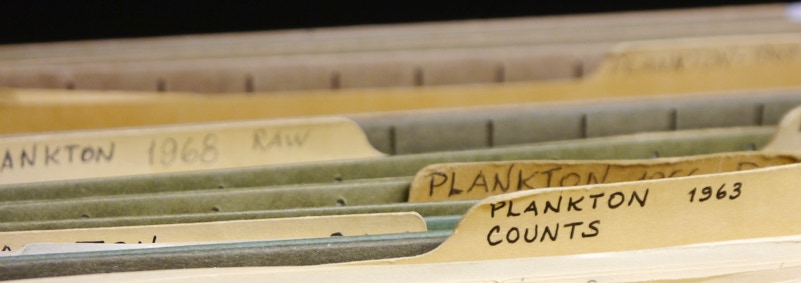NABATS Methodology
Every Monday morning at 8 am, one of the ‘Bunker C’ staff or students and the research vessel captain and crew would sail east out of Wickford Harbor to the long-term plankton monitoring station called Station II, located in the West Passage of Narragansett Bay.
Once there, a flurry of activity commenced as a series of oceanographic measurements and water sample collections were taken. A bucket was lowered into the surface of the sea to collect a surface sample and a calibrated thermometer was placed in the bucket to record surface water temperature. Similar water sample collection was made at mid-depth and near-bottom water using a Niskin bottle. Water from surface, mid- and near-bottom depths was placed in bottles for transport back to the lab where analysis of nutrient concentration and plankton abundance and species composition would completed. Fine nylon mesh plankton nets were towed to collect zooplankton, ranging from minute planktonic crustaceans to gelatinous ctenophores, so that their abundance and species identification could be determined.
By 10 am, the sample collection was complete, and processing of the samples for determination of their chemical composition (N, P, Si), pigment concentration (chlorophyll) and plankton identification began in the Bunker C Lab. Samples for the identification of zooplankton were concentrated and preserved for counting and species identification. Phytoplankton samples from surface, mid and bottom depth were counted live to avoid preservation artifacts, by placing a 1 ml volume of the sample in a counting chamber and recording the species identification and abundance of phytoplankton species present.
At maximum effort, measurement of 27 different lab analyses were completed on each set of weekly water samples. By late afternoon, most of the measurements were finished and data were recorded; that week’s sampling was done. The Narragansett Bay Time Series was built on this weekly ritual, which was repeated for 1,994 weeks (with some gaps) between January 1959 and May, 1997.


Bunker C — March, 2014


